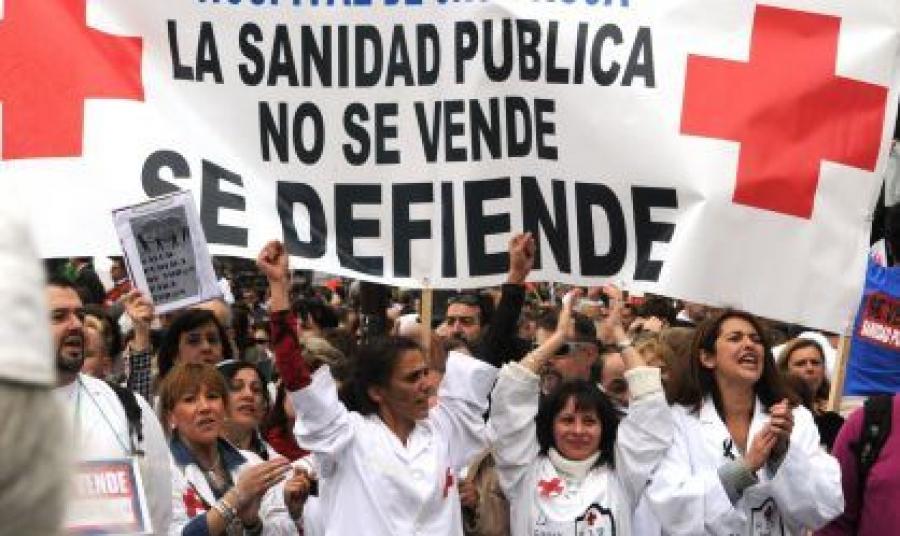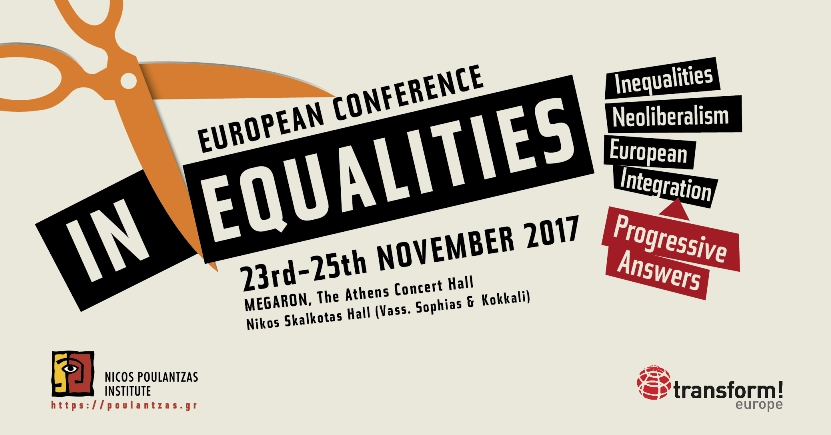Annamaria Simonazzi is Professor of Economics at Sapienza University of Rome, Italy, where she has been the director of the Master in Economics and local coordinator of the European Phd in Socio-Economic and Statistical Studies. She presides the Scientific Committee of research institute Fondazione Giacomo Brodolini, is co-director of the journal Economia & Lavoro and member of the editorial board of inGenere.it. Her research interests range from macroeconomics, to social policy, gender and labour economics. Her recent publications include: “Economic relations between Germany and Southern Europe“, The Cambridge Journal of Economics, 2013 (co-authored) and “Italy: Continuity and Change in Welfare State Retrenchment” in The European Social Model in Crisis – Is Europe losing its Soul? (Edward Elgar 2015).
Rafael Muñoz de Bustillo Llorente is Professor of Applied Economics at the University of Salamanca. is Professor of Applied Economics at the University of Salamanca in Spain. His main fields of study and research are Labour Economics, Economics of the Welfare State, European Integration and Development Economics. From in 1999 to date, has participated in over twenty research programs, written chapters in collective volumes and published several articles in scientific journals in both Spanish and English. Some of his books that have been translated in English are: “Measuring more than Money: The Social Economics of Job Quality”, (co-authored, Edward Elgar 2011) and “Operating Hours and Working Times: A Survey of Capacity Utilization and Employment in European Union” (co-authored, 2007).
The two professors recently attended the European Conference on “Inequalities, Neoliberalism and European Integration: progressive responses”, organized by the Nicos Poulantzas Institute and transform! europe, that took place in Athens 23-25 November, as speakers in the panel “Inequalities, welfare state and middle classes in Southern Europe”. Simonazzi and de Bustillo spoke to Greek News Agenda* about how the crisis has affected the middle classes in Spain and Italy, if welfare states in Southern Europe share common traits, how the shrinking of the welfare state is connected to the rise of nationalism and what can be done to defend the european social model:
How has the crisis and subsequent austerity measures affected the middle classes in Spain and Italy?
Annamaria Simonazzi: In Italy, economic stagnation had started much before the crisis; the labour market was severely segmented, with a very high rate of young people with atypical contracts, in precarious jobs or unemployed. Thus, before the crisis, middle classes’ anxieties were mainly related to their children’s bleak future. The crisis has spread unemployment problems to all age groups, and the middle classes were not spared. The possibility of bleak future for the children is now complemented with an equally bleak present for the grown-ups of the family. Unemployment and the associated decline in labour income is the main reason behind the inequality surges occurring in Italy during recent years, affecting especially the lower middle classes.
Rafael Muñoz de Bustillo: The impact of the crisis on the middle class in Spain (defined as the population with an income equivalent 80 % to 200 % of the median income) has been double: on one hand there has been a reduction of the size of the middle class, as many have slid down the income ladder to be absorbed by the lower income classes. In relative terms we estimate this reduction at 5%. On the other hand, as a class, after the crisis, the middle class is poorer, as there has been a 4.5 % reduction of the income they command (out of a total income that is already lower as result of the decrease of GDP, 5.8 % lower from 2008 to 2011).
The middle class has also been affected by the huge increase in unemployment related first to the crisis, and then to the austerity measures taken after May 2010 -when the countercyclical Keynesian policy applied until then by the social democratic government (PSOE) was changed to a policy of fiscal consolidation to address the debt crisis- resulting in unemployment reaching 26 % in 2013.
Furthermore, austerity measures had a negative effect on many public services such as health, education or pensions, services that are closely related to middle class aspirations such as a certain standard of health care, university education for the children etc.
Do classical typologies of welfare state regimes (e.g. Esping-Andersen’s classification of welfare states as liberal, conservative and social democratic) also explain differences in income inequality among EU countries? Some authors have argued there exists a fourth type of welfare state: the Southern European, shared by Italy, Spain, Portugal and Greece. Would you like to comment on this?
Annamaria Simonazzi: The Mediterranean welfare state has been mostly based on the family in order to complement a very unequal provision of services. There had been timid attempts in various countries (and in Italy) to increase the role of the state and extend the coverage of the social services newtork beyond pensions (e.g., long-term care, childcare, poverty assistance), but these have been mostly cancelled by the fiscal crisis.
Rafael Muñoz de Bustillo: Generally there is an inverse relation between the size of the welfare state (social expenditure as a percentage of Gross Domestic Outpout) and income inequality. Spain for example is one of the EU countries with higher income inequality as measured by the Gini Index, as result of the increase in inequality during the crisis. But interestingly, the higher level of inequality is not the result of higher inequality at the market level, i.e. in terms of market income, but results from the small redistribution power of the meager welfare state existing in the country.
As for the existence of a fourth welfare state model, although I think that Mediterranean countries share some elements, like the lower level of social expenditure as a percentage of GDP, I don´t think they conform a “model”. For example, clientelism, supposed to be one of the elements of such model is completely absent in Spain, while in some areas, such as health (or pensions) the Spanish welfare system is perfectly comparable with the systems in place in the Scandinavian countries: universal, fairly efficient, etc. The only difference, again, is the lower percentage of GDP allocated to the services.

Middle classes are defined not only by their income, but also by their aspirations. What is the effect of the generalized sentiment of vulnerability and insecurity among the middle classes today? How is it connected to the rise of populism and nationalism?
Annamaria Simonazzi: The generalized sentiment of vulnerability due to the state of the economy, has certainly contributed to a shift towards populism and a growing sentiment against immigration, though the female migrant carers represent the backbone of the elderly care system, and male immigrants sustain a large part of agriculture and construction. In Italy the anger is directed more towards the political class, expressed in the form of supporting “populist” parties or not voting at all.
Rafael Muñoz de Bustillo: The crisis has gravely affected incomes, but more than that it has affected expectations about the stability of the future, anything could happen, nothing can be taken for granted anymore (not even the unity of the country, as is evidenced by that Catalonian crisis). There is a growing concern regarding the possibility of middle class children to reach middle class status, and regarding the capacity of the State to honor its compromises in terms of pensions, healthcare, etc.
It seems that the so-called “European social model” is under threat everywhere in Europe. Can progressive policies be sustained under the current circumstances? Under what terms?
Annamaria Simonazzi: As far as I know, the Nordic welfare model is still resisting (although with some scars): it is based on a high rate of employment (both male and female) which is indispensable to pay for the public services through taxation, and industrial relations are aimed at easing the transition towards new technologies -what once was called the “high road” to growth with equality. Of course, countries with a lower level of development and sharing a common currency with stronger partners face much greater difficulties in pursuing a road of high employment. The process of fiscal consolidation and high levels of debt severely constrain their options.
Rafael Muñoz de Bustillo: Certainly. They can be sustained as long as the correlation of political forces allows it. It is not a problem of economic sustainability of the model but a problem of having the political strength needed to allocate enough economic resources to make it sustainable in the future. This can be done within an economic area such as the EU, but, again, only if there is a coalition of countries large enough to readdress the type of policies adopted in the past.
* Interview by Ioulia Livaditi
TAGS: CRISIS | LABOUR RELATIONS















